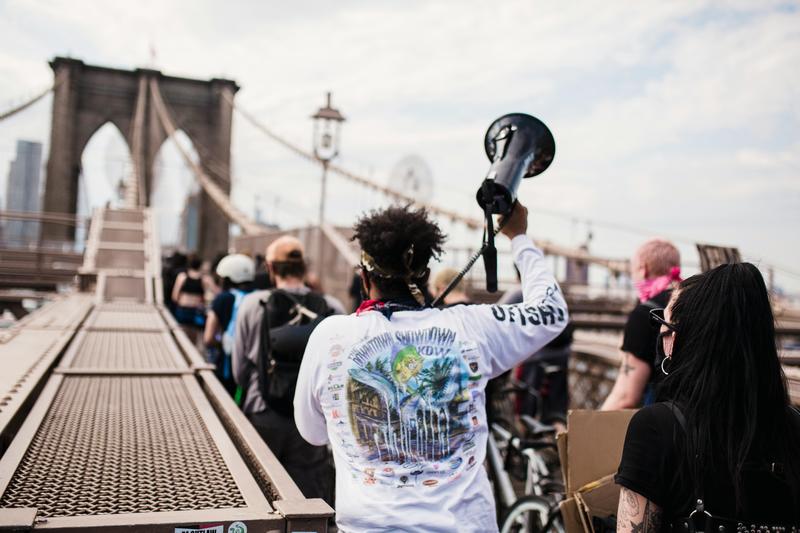Why Facing Only Today’s Discomfort Holds You Back
I hear this a lot.
Someone will say… “Get out of your comfort zone? Why on earth would you need to do that? Life pushes you out of your comfort zone more than enough already.”
And at first… it sounds like solid wisdom.
But there’s a big piece missing.
Yes—life will throw you curveballs. It’ll challenge you. Relationships, deadlines, health issues, unexpected changes—there’s no shortage of discomfort.
But here’s the thing… discomfort by itself doesn’t create growth.
If you’re not intentional about how you engage it, you’re just reinforcing the same emotional patterns you’ve been living in for years.
And the people who grow the fastest? They don’t just wait for life to push them. They also choose the right kind of discomfort on purpose—in a way that lets them train their nervous system for the states they actually want to live from.
Today I want to take this idea apart—because it’s easy to assume that “life pushing you” means you’re automatically growing.
But that’s not how it works.
We’ll look at why discomfort doesn’t guarantee change… how your inner patterns respond to it… and why it’s not just about surviving discomfort, but also about choosing the right kind of discomfort to train who you want to become.
Discomfort Alone Isn’t the Teacher
A lot of people treat discomfort like a personal trainer—“If it’s hard, I must be getting stronger.”
But your nervous system doesn’t work like a bicep.
If you step into discomfort and your default emotional state is frustration, anxiety, or shutdown—guess what you’re reinforcing?
That exact state.
Over time, your brain and nervous system get better at producing it… faster… and with more intensity.
So, if you walk into a tense conversation and your pattern is to tighten up, get defensive, and rush to escape—doing that over and over will just make that reaction more automatic.
You’re not building capacity. You’re training reactivity.

Life Already Delivers Discomfort
You don’t have to go looking for ways to be uncomfortable. Life’s pretty efficient at handing them out.
Think about relationships.
There’s nothing like a disagreement, unmet expectation, or repeated pattern with someone you care about to make your chest tighten.
Work? Same story.
Missed deadlines, unclear communication, unexpected responsibilities—these hit you without warning.
Even small, daily moments—the traffic jam, the broken appliance, the change of plans—can knock you off balance.
So yes… life will push you out of your comfort zone.
But here’s the trap: if the state you train under pressure isn’t the state you want long-term, life’s “pushes” won’t move you forward—they’ll just deepen the rut you’re already in.
That’s why conscious discomfort choice matters.
It lets you work at the right level of intensity so the reps actually stick.
The Model That Actually Drives Change
Everything you do—every conversation, every decision—follows the same chain:
Perception → Emotion → Thought → Action
Something happens. You perceive it in a certain way.
That perception triggers an emotional state.
That state shapes the thoughts that show up.
And those thoughts drive the actions you take.
Which means… the actions are always the end of the chain.
If you want to change the outcome, you have to start earlier—by training the emotional state that drives the thought and the action.
Without that, you can change the surface behavior, but the underlying pattern will keep pulling you back.

Discomfort as a Training Ground
Let’s take a simple example.
Someone gets critical with you in a meeting.
If your default state is defensiveness, your thoughts will race to justify yourself… maybe fire back… or maybe shut down completely.
If you keep showing up that way, you’re locking in a pattern of defensiveness under pressure.
But what if you use that same moment as training?
You notice the old pattern starting to kick in.
You redirect to a state you want to reinforce—maybe calm clarity, or grounded confidence.
From there, your thoughts change. The options you see expand. Your actions line up differently.
It’s the same discomfort—but now it’s rewiring you in the direction you actually want to go.
Don’t Just Wait for Life to Choose
Here’s where the “life pushes you enough” idea falls short.
If you only train when life throws something at you, the timing is random.
And the intensity might be way above what you can hold right now.
When the challenge is too big, you’ll snap right back into your default pattern. No new wiring happens.
That’s why the most effective approach isn’t to avoid chosen challenges—it’s to choose them intentionally.
You create right-sized discomfort—enough to surface the pattern, not so much that it overwhelms you.
This is how you build capacity step by step, so when life does hit you harder, you’re already conditioned to hold the state you’ve trained.

Choosing Your Discomfort Wisely
So what does “intentional discomfort” look like?
It could be volunteering to lead a meeting when you’d normally stay quiet.
It could be setting a boundary in a friendship, knowing the conversation might feel awkward.
It could be taking on a physical challenge that pushes your body just enough to make your mind want to quit—without risking injury.
The point isn’t the task itself—it’s the emotional intensity it triggers.
You’re deliberately stepping into situations that make the old pattern show up… so you can train a new state in real time.
Over time, that state becomes your default—not just in training, but everywhere.
Relationships as the Most Potent Arena
If you want the richest source of training? Look at your closest relationships.
They’ll bring up more emotional intensity than any seminar, mountain climb, or cold plunge ever could.
Why? Because they tie directly into your identity, your history, and the meaning you assign to connection.
One person’s offhand comment can trigger weeks of old patterns if you let it.
But if you see those moments as cues—not threats—you can use them to reinforce the exact state you want to live from.
And here’s the bonus—relationships don’t just give you unchosen discomfort. You can also engineer these moments on purpose by having the conversation you’ve been avoiding, or addressing the topic you’ve tiptoed around.

The Shift From Reaction to Choice
Here’s the turning point: discomfort stops being something you “get through” and starts being a tool.
Instead of asking, “How do I avoid this?” or “How do I survive this?”…
You ask: “What state do I want to train here?”
That question changes everything.
It moves you from reaction—where your perception, emotion, thought, and action are on autopilot—to deliberate choice, where you’re building alignment one rep at a time.
What This Looks Like in Real Life
Let’s say you’re about to give difficult feedback to a team member.
Default pattern: You perceive it as confrontation.
Emotion kicks in: tension, anxiety.
Thought: “They’re going to take this the wrong way.”
Action: You soften the feedback so much they don’t even know what to change.
Trained pattern: You perceive it as an opportunity to lead.
Emotion: grounded presence.
Thought: “Clear and respectful will help them the most.”
Action: You deliver the feedback with calm precision.
Same situation. Different state trained. Different outcome.

Why This Matters More Than Ever
We live in a world with constant, unpredictable discomfort—social, economic, relational.
If you only ever meet that discomfort from your default state, you’re letting your nervous system train itself in whatever it learned years ago.
But if you combine the discomfort life gives you with the discomfort you choose intentionally—you start building a state that holds under any condition.
That’s what people really mean when they talk about resilience or stability.
It’s not that life stops pushing you. It’s that you’ve trained how you’ll meet it—on purpose.
An Invitation
So here’s the question to take with you:
What emotional state are you practicing—over and over—without even realizing it?
And is that the state you want driving your thoughts, your actions, your relationships, your results?
If you’re ready to stop managing symptoms and start training a steady, resilient inner state, I’ve built a system for that.
It integrates perception, emotion, and nervous system—so you don’t just understand your patterns… you actually shift them.
I also share practices weekly on Instagram—@mikewangcoaching.
And if you want more depth, you can join the newsletter here.

